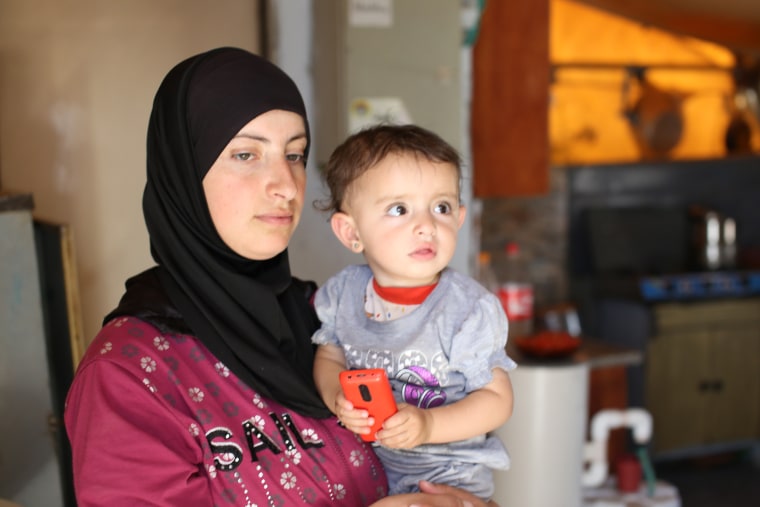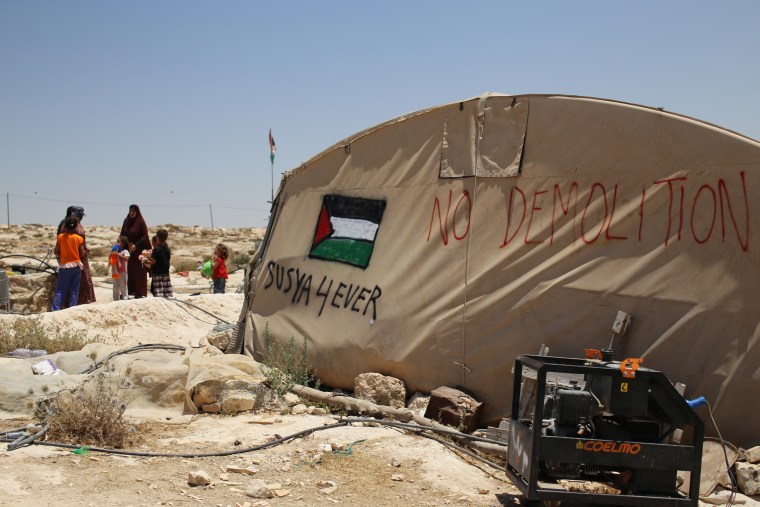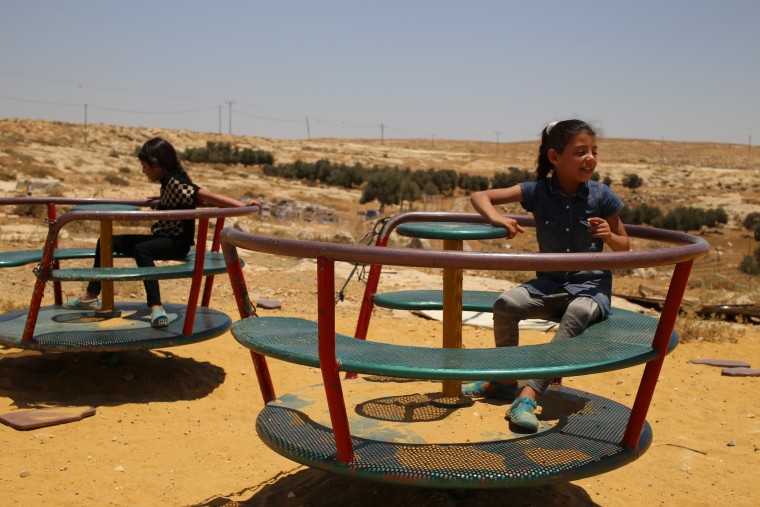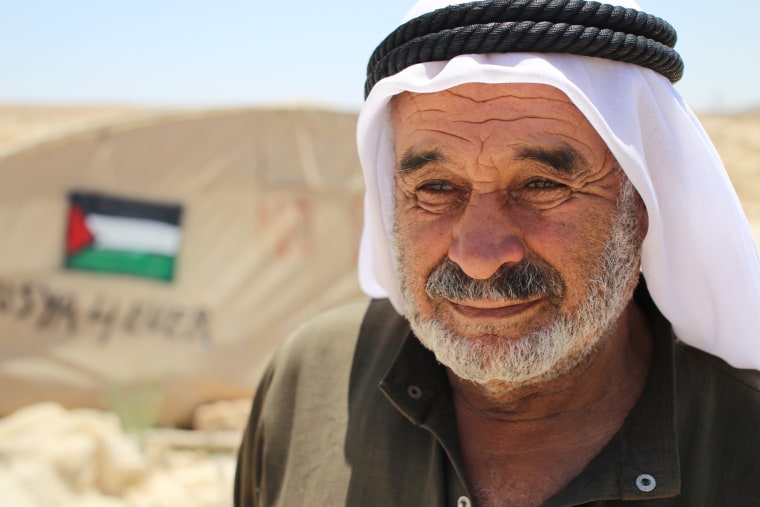SUSSIYA, West Bank — How do you explain to a child that he may become homeless at any moment? That's a problem that Nasser Nawajeh deals with all the time.
“It’s very difficult when my son comes to me and asks me, ‘Daddy, why do the Israelis want to destroy our house?’” the 33-year-old farmer told NBC News.
Nawajeh and his family are among 320 residents of Sussiya in the West Bank who face having their homes demolished. In May, High Court Judge Noam Solberg gave the green light for about half of the homes in the village homes to be destroyed.

It wouldn’t be the first time the villagers were forcefully removed. Sussiya sat one mile away until 1986, when residents were evacuated after Israeli authorities found the remains of a 4th-century synagogue on their land. Villagers then built makeshift houses on their own farmland, although the military never granted them building permits.
Since 2006, Israel has demolished at least 876 Palestinian residences in the occupied West Bank — according to Israeli human rights organization, B’Tselem. This has caused more than 4,100 people — about half of them children — to lose their homes, the group says.
Settlers living near Sussiya and their supporters counter that it’s the Palestinians who are in the midst of an illegal land grab.

“Records show no village called Sussiya ever existed in this area so this is a provocation,” according to Ari Briggs, an activist working for Regavim, an Israeli group that describes itself as a “legal advocacy organization focused on land ownership issues.”
Besides, he said, the land is classified for agricultural use and not habitation.
Hundreds of thousands of Jewish settlers live in the occupied West Bank, which Israel captured in the Six Day War in 1967, along with East Jerusalem and Gaza. Palestinians see the territory as integral to a future state.
Related: What It's Like to Be the Last Boy in 'Ghost Town'
Attention from abroad may have helped halt the demolitions in Sussiya, for the moment at least.
On Tuesday, 28 European Union foreign ministers called on Israel to stop plans for the demolition and forced transfer the population of Sussiya. The State Department has also said it was following developments in the village closely, and urged authorities to refrain from carrying out any demolitions.

In addition, the body that administers the Israeli-occupied territories — the Coordinator of Government Activities in the Territories (COGAT) — has met with villagers to try to find a solution to the problem.
“Representatives of the civil administration have met with the residents of Sussiya and their representatives in order to discuss the High Court's decisions and examine alternative solutions in accordance with the planning considerations,” COGAT said in a statement.
Still, any passing Israeli military vehicle evokes fears that it will be followed by bulldozers preparing to level the Palestinians' homes. For 70-year-old Mohamed Ahmed Al Nawajeh, the Israeli policy means the destruction not only of his home but the loss of land that his father and grandfather cultivated
“We fear the occupation forces will uproot us," he said. "This is a transfer policy and at the end they will destroy our village."
